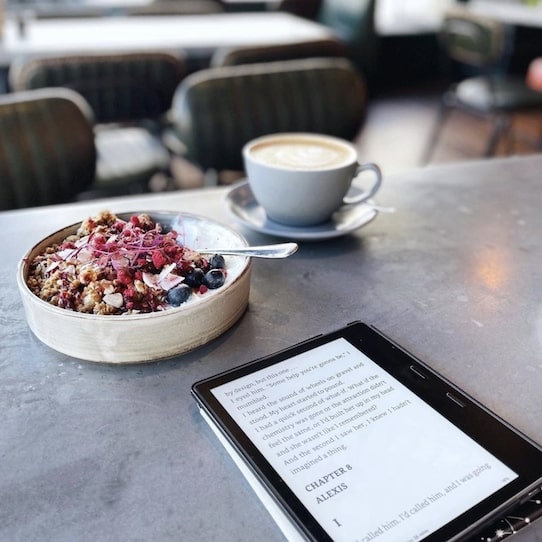Kindle Publishing Income founder Sophie Howard says eBooks are no different than any other product: price matters. A staggering 96% of online shoppers will compare prices before clicking the Add to Cart button. And of that number, 31% say price is the number one factor in determining whether or not they buy. So how much should you charge for the eBooks you’re about to self-publish on Amazon’s KDP platform? What’s the sweet spot that’ll make ya the most money? Read on.
First things first. Amazon offers a standard 35% royalty or a 70% royalty option. All eBooks are eligible for the standard 35% royalty as long as they’re priced within Amazon’s acceptable ranges:
Okay, so how do you double your royalty to 70%? Right? ‘Cause who wouldn’t wanna make twice as much for the same amount of work? Well, here’s how you qualify for that:
Kinda confusing, huh? Agreed. But basically, you’re looking at a range of $3 to $10 to max out your earnings per sale. From there, Sophie has four tips to find that perfect price. First, do your due diligence. How much are your main competitors charging for their eBooks? Not that you have to charge exactly what they do, but since you’ll show up in the search results next to them, you probably won’t wanna be too far off, right? Now scroll down. Keep reading.
Sophie’s second suggestion is to remember: when it comes to Kindle publishing, size matters. The bigger (more pages) it is, generally speaking, the more you can charge. But, I mean, use some common sense. Would you pay $30 for a 25-page eBook on gardening? Didn’t think so. So yeah, you can gamble, price way above the $9.99 cutoff for the 70% royalty, and hope you’ll still come out ahead, but that book better be really long and really good and really helpful, right? Or else it’s gonna flop worse than an NBA player.
Sophie’s third tip is to launch with a discounted price point, just to build that critical momentum in the beginning. People love deals. And the cheaper something is, even a Kindle book, the more likely they are to buy it as an impulse purchase. Plus, think about it, their expectations probably won’t be very high, will they? So if your book’s solid, it should make it easier to get positive reviews. And those reviews will then justify the higher price when you ultimately bump it up a week or two down the road, right?
Speaking of which, Sophie’s fourth and final eBook pricing tip, is to gradually increase the price as that momentum builds. Don’t just jack it up by 400% after you get your first 5-star review. Be strategic, be patient. Get some sales, get some reviews, bump it little, repeat. Stair step your way to your goal long-term price point. If you do those four things and never slack on quality (whether you’re writing these yourself or hiring ghostwriters), you should be good to go.

